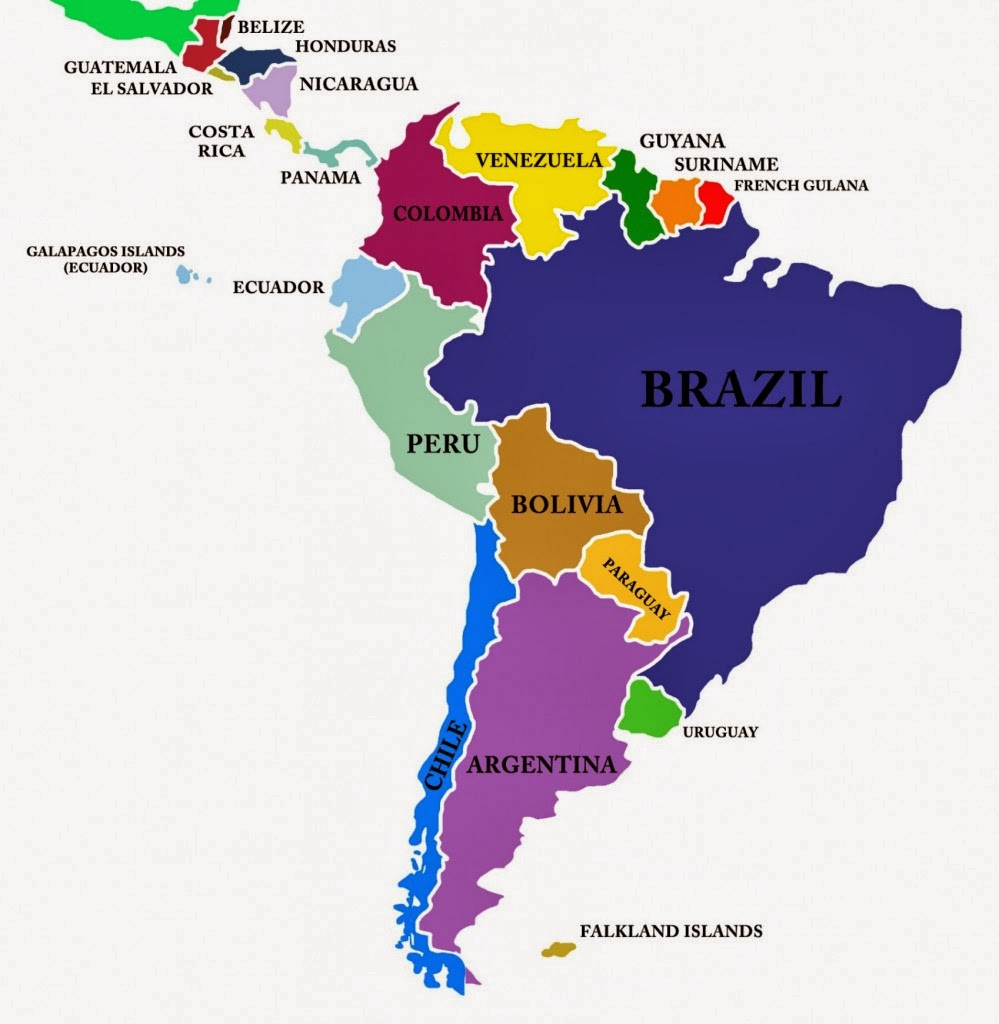Understanding the labeled map of Latin America is essential for anyone interested in geography, culture, or politics of this vibrant region. This article will provide you with detailed insights into the various countries, their capitals, and geographical features of Latin America. We will explore the importance of maps in education and provide valuable resources for further learning.
Latin America, encompassing a diverse array of cultures and landscapes, is home to some of the most fascinating countries in the world. The labeled map serves not only as a geographical representation but also as a tool for understanding the intricate web of history, economy, and social dynamics that define this region. In this article, we aim to enhance your knowledge about Latin America through a detailed exploration of its labeled map.
In the following sections, we will delve into the specifics of the labeled map of Latin America, including its various features, key countries, and significant landmarks. You will also find helpful resources and tools to further your understanding of this captivating region.
Table of Contents
- What is a Labeled Map?
- Importance of Labeled Maps
- Overview of Latin America
- Countries in Latin America
- Capital Cities of Latin America
- Geographical Features of Latin America
- Educational Resources for Learning
- Conclusion
What is a Labeled Map?
A labeled map is a geographical representation that includes the names of various locations, countries, states, or cities. It serves as an essential tool for education and orientation. In the context of Latin America, a labeled map helps to identify the region's countries and their respective capitals, making it easier for learners to understand their geographical context.
Key Features of a Labeled Map
- Identification of geographical boundaries
- Names of countries and capitals
- Major cities and landmarks
- Geographical features such as mountains, rivers, and lakes
Importance of Labeled Maps
Labeled maps play a crucial role in education and geographical studies. They provide a visual representation of information that can enhance learning and retention. Here are some reasons why labeled maps are important:
- Visual Learning: Maps cater to visual learners who benefit from seeing information represented graphically.
- Geographical Awareness: They help individuals gain a better understanding of the world around them.
- Historical Context: Maps can provide insights into historical events and cultural developments.
Overview of Latin America
Latin America is a region that includes countries in South America, Central America, and parts of North America. It is characterized by its rich cultural diversity, languages, and historical backgrounds. The region is primarily Spanish and Portuguese-speaking, with a mix of indigenous languages.
The labeled map of Latin America helps to illustrate the geographical layout of the region, showcasing its various countries and significant landmarks. It highlights the unique features that define each country within Latin America.
Countries in Latin America
Latin America comprises numerous countries, each with its own unique identity and cultural heritage. Here is a list of some key countries in the region:
- Argentina
- Brazil
- Chile
- Colombia
- Mexico
- Peru
- Venezuela
- Uruguay
Each of these countries has its own distinct geography, history, and cultural practices, making the labeled map an essential tool for understanding the diversity within Latin America.
Capital Cities of Latin America
Knowing the capital cities of Latin America is crucial for anyone studying the region. Below is a table that lists some of the key countries along with their capital cities:
| Country | Capital City |
|---|---|
| Argentina | Buenos Aires |
| Brazil | Brasília |
| Chile | Santiago |
| Colombia | Bogotá |
| Mexico | Mexico City |
| Peru | Lima |
| Venezuela | Caracas |
| Uruguay | Montevideo |
Geographical Features of Latin America
Latin America is known for its diverse geographical features, ranging from mountains and rivers to forests and deserts. Here are some notable geographical features:
- The Andes Mountains: The longest continental mountain range in the world, running along the western edge of South America.
- The Amazon Rainforest: The largest rainforest on Earth, located primarily in Brazil.
- The Amazon River: The second-longest river in the world, flowing through several countries in South America.
- The Pampas: Fertile lowlands in Argentina known for agriculture.
Educational Resources for Learning
For those interested in learning more about the labeled map of Latin America and its countries, several resources can be beneficial:
- Online Map Tools: Websites like National Geographic and Google Maps provide interactive maps.
- Geography Textbooks: Academic books often contain detailed maps and explanations.
- Documentaries: Visual media can provide insights into the culture and geography of Latin America.
Conclusion
In summary, the labeled map of Latin America is a vital resource for understanding the region's countries, capitals, and geographical features. Through this article, we have explored the importance of labeled maps, key countries in Latin America, and valuable resources for further learning. We encourage you to take action by exploring a labeled map on your own or sharing this article with others interested in geography.
Final Thoughts
Thank you for taking the time to read this comprehensive guide on the labeled map of Latin America. We hope you found the information helpful and engaging. Don't hesitate to leave a comment, share your thoughts, or explore more articles on our site. We look forward to seeing you again soon!


